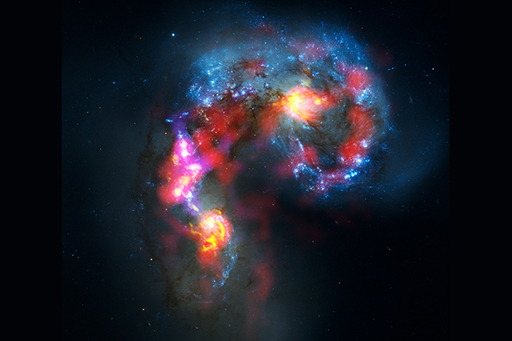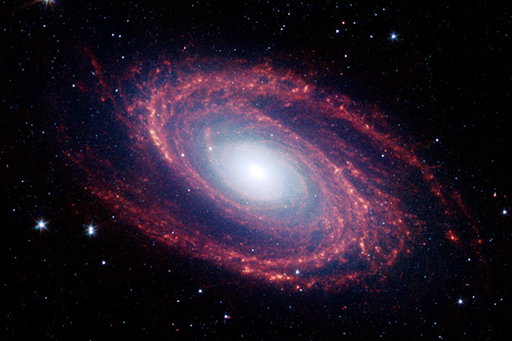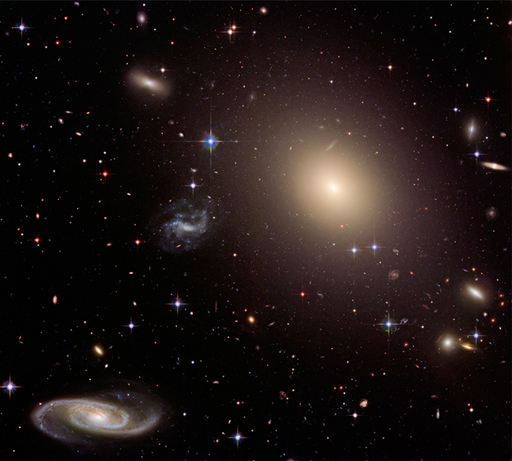4.1.3 The right type of galaxy

So, if our star is the right sort of star, what makes the Milky Way the right sort of galaxy for life to get going?
As we saw earlier, galaxies are vast accumulations of stars which evolve and change with time: they collide and merge with each other, cannibalising dust and gas from their companions in the process. The same sort of arguments that applied to stars also applies to galaxies: they must be old enough (but not too old), stable and dusty.

The necessity for elements heavier than hydrogen (H) and helium (He) for dust formation, leads to the conclusion that the dust-poor elliptical galaxies will be poor in the rock-forming elements necessary for planet building, and so are less likely to provide an environment in which life might develop. Spiral galaxies (like the Milky Way) have abundant dust mixed in with the gas, and so have the potential for planet formation.
Location
The location of a star within a galaxy is also important, because stars are not distributed evenly within a galaxy. The density of stars increases towards the centre of a spiral galaxy, leading to decreased distances between stars, and an increasing number of neighbours per star.
Shorter distances between stars implies that mutual stellar attractions will be increased, resulting in higher gravitational instabilities for interacting stars. The higher stellar density implies that there will be a higher rate of stars becoming supernovae, with accompanying explosions of energy.

Clusters of galaxies will also be regions of high activity: interaction between stars, turbulence, high radiation flux, frequent supernovae, etc., just as for regions of high stellar density within the Milky Way. Galaxies were clustered more closely together at an earlier epoch within the history of the Universe, and consisted of less-evolved stars. Galactic evolution, as well as stellar evolution, must also have played an important role leading up to the formation of life.
In the next section, you will explore what makes the Sun’s position in the Milky Way just right.
